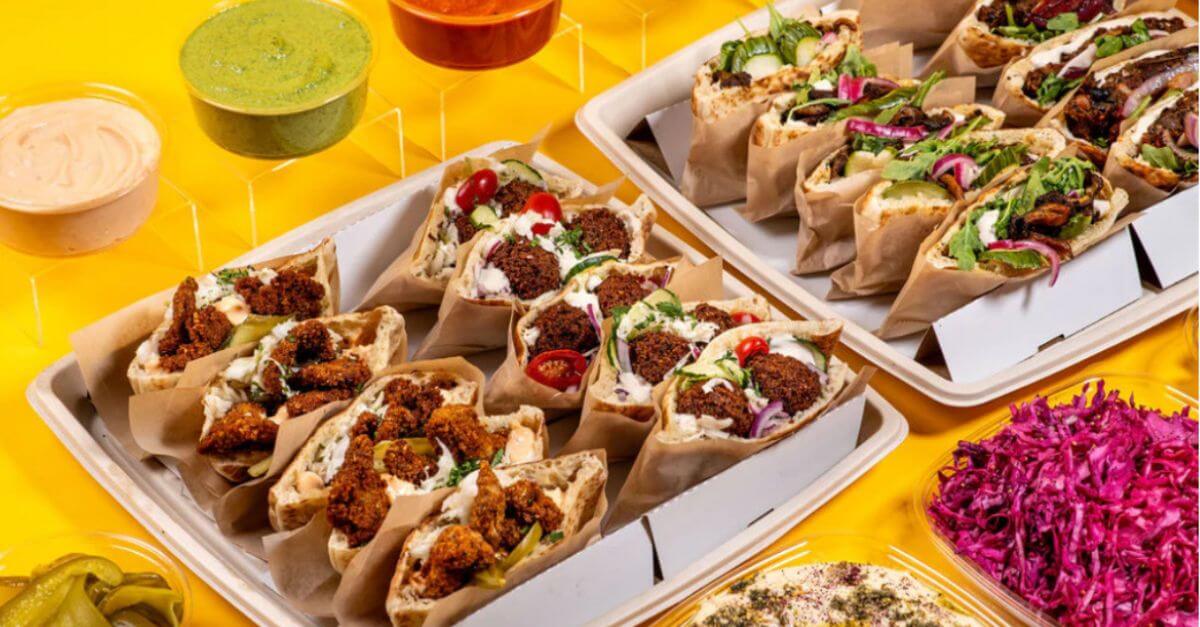Take-out Chinese, Anyone?
When Moses and the children of Israel hastily left Egypt, they had to worry about that weird bread that didn’t rise and how to cross the Red Sea pursued by Pharaoh’s soldiers. The last-minute departure allowed for no time to plan ahead. Fortunately, God led the way and sent manna.
When my husband, Eli, and I decided to celebrate Passover with our journalist son who lives in China, we had the luxury of time to plan. And, though I kvelled that Jonathan and his fiancée, Amy, a Beijing-area native, preferred a Seder in their apartment to reservations at the expatriate community version, I knew that “making Seder” in Beijing could not be left to chance. For starters, the condo, roomy and modern by Chinese standards, lacks an oven.
Setting the menu was a challenge. Striving to be traditional, I figured gefilte fish and chicken soup could be achieved. For the entree: Stir fry? Chinese takeout? Having previously sent holiday packages of home-baked Passover goods, canned macaroons and Jonathan’s favorite, chocolate-covered matzo, I could cover dessert.
Next, grocery logistics. I e-mailed Jonathan about what he could get in Beijing. Kehillat Beijing, the local Jewish expatriate congregation (www.sinogogue.org) was taking matzo orders. The available “raw materials” included eggs, vegetables, apples, nuts and chicken. He reminded me that he had once found cinnamon for charoset hard to find.
Did they have enough dishes, a decent pot and non-chopstick utensils? “We can fill in at Ikea,” Jonathan said during a rare phone conversation. (The Ikea in Beijing, it turns out, is a weekend mecca for Chinese yuppies.)
With today’s security regulations, most travelers worry about manicure scissors; would matzo meal be taken for anthrax? And, since it invariably leaks, I did not want it mixed with clothes. I started a box to mail.
Of course, food is only one element of the Seder. Eli was in charge of selecting pages of the Haggada, copying them and assembling 12 copies to mail. I packed the brownies and mandel bread I had previously baked, adding the packaged sweets, cinnamon and infamous matzo meal. I did my civic duty to keep postal rates down by sending the box via Express Mail to Jonathan’s office for “only” $86.
Although I had considered canned gefilte fish too heavy to mail, I regretted my frugality (what’s another $86?) when I tried to lift my suitcase with it packed. Friends had bought, at bargain price, several 6-pound, 14-piece cans at a Miami-area Costco, and they gave us one as a going-away present. Would my luggage pass through airport security X-ray machines with these giant cylinders of metal wedged in? I breathed one sigh of relief just checking in but didn’t really relax until the plane took off without my being detained for a search.
With gefilte fish, you need horseradish. Jonathan had said we would be able to find it in Beijing. Dubious, I envisioned returning to my roots — raw horseradish roots my grandmothers grated — but decided to play it safe: This Seder would be primitive enough. So, a large jar of beet-injected maror, swaddled in bubble wrap and two Ziploc bags, went into Eli’s suitcase, along with a jar of vegetarian ersatz schmaltz for matzo balls, a Seder plate from Grandma and a spanking-new matzo cover and kiddush cup, gifts from friends for Amy and Jonathan.
We were off — laden like our grandparents embarking from the Old Country — but with enough frequent-flyer miles to upgrade to business class. Watching movies en route to China for Passover is a far cry from sailing steerage to Ellis Island.
Arriving several days before the Seder, we had a chance to sightsee and enjoy quality time before the holiday. Eli’s cousin Ginger was traveling with us; in addition to being good company and a close friend, she met the kitchen competency requirement for this trip. When she had asked what to bring as a gift for Jonathan and Amy, I said, “Don’t worry about schlepping anything — you can buy them a soup pot at Ikea in Beijing.”
Ikea on Sunday afternoon was like Coney Island on the Fourth of July. But Jonathan, fluent in Chinese, helped us navigate and buy the few basics accessible there. As Seder night approached, Eli, Ginger and I tried to grocery shop on our own while Jonathan and Amy were at work. A supermarket in a mall adjacent to our hotel displayed eggs, including some that were hard-boiled and sliced to show odd-colored yolks, including green ones (Dr. Seuss’s inspiration?). We managed to buy apples, nuts, vegetables and strawberries but couldn’t tell which cartons held raw eggs, so we had to wait until Jonathan could go with us. We eyed jars of pickles (they looked traditional), and the clerk manning the counter insisted we take two; we still don’t know if it was a two-for-one sale. The evening before the Seder Jonathan led us to Carrefour, a huge French-owned Costco cum Bloomingdale’s cum Fortnum & Mason, also jammed. There, with him running language interference, we found the right eggs, as well as wine, vegetables and chicken (raw for soup and cooked for dinner) — and chicken feet. Ginger and Eli had recalled their childhood disgust when their grandmother hoarded and relished, as her personal delicacy, the feet she cooked in soup. Grandma Minnie would have been proud as we bought a package for our Beijing Seder brew!
Seder morning Ginger, Eli and I taxied over to the apartment, where we found the table set early by the children, and Amy’s father, retired and curious, who had arrived from their town near Beijing. Later, when we needed something from the small store in the neighborhood, Eli got ready to go and Mr. Li, who doesn’t speak English, went along, took Eli’s hand to cross the street and paid, Eli’s uncomprehended protests notwithstanding. Male bonding.
Later, Ginger and I got to work putting the eggs on to boil, while Eli peeled the carrots for soup. Once the pot was on, I used a heavy-duty Chinese cleaver to chop nuts and apples (bringing the Cuisinart would have been excessive); plum wine mixed with grape juice simulated Manischewitz to bind the charoset. My mother’s foolproof matzo ball formula, mixed the old-fashioned way by hand rather than mixer, chilled as water boiled.
The guests arrived between 7:30 p.m. and 8 p.m. There were Jonathan’s two Jewish-American peers at Reuters (one with wife); Hang Tien, his ex-roommate and an aspiring young Chinese blues singer; Mr. Li; Jonathan; Amy, and the three of us. We had a trilingual Seder, as Jonathan explained the service in Chinese for Mr. Li and Hang Tien. Mr. Li enthusiastically enjoyed the four glasses (at least) of wine. The matzo balls came out perfectly, and dipping gefilte fish into horseradish with chopsticks is the ultimate multi-cultural experience.
Why was this night different from all other nights? Let me count the ways. But dayenu — it was enough, and it was wonderful, to be permitted to celebrate with our son, even in Beijing.















